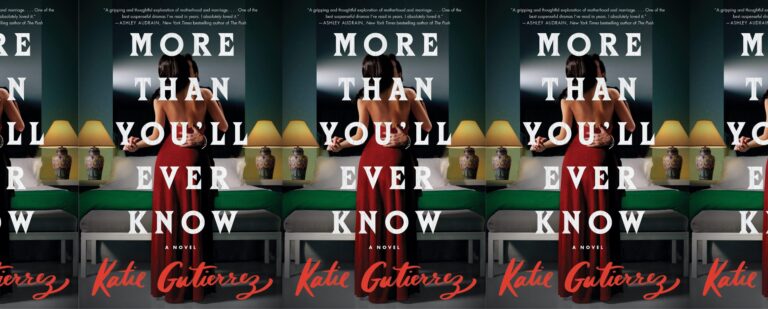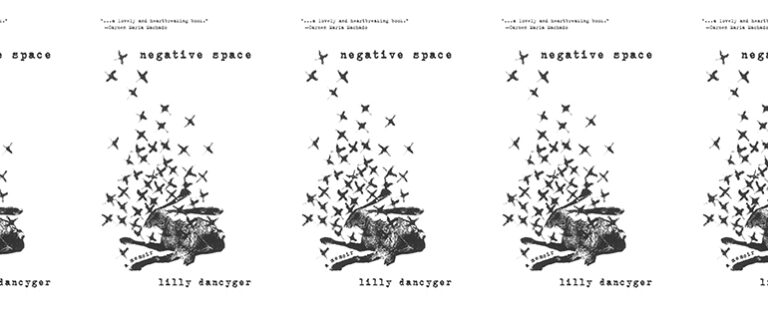“To resuscitate that stifled voice”: An Interview with Robin Richardson on Minola Review

Robin Richardson is the author of two collections of poetry, and is Editor-in-Chief at Minola Review. Her work has appeared in Salon, Poetry Magazine, Hazlitt, Tin House, Partisan, Joyland, and The North American Review, among others. She holds an MFA in Writing from Sarah Lawrence College, and has been shortlisted for the CBC, Walrus, and Lemon Hound Poetry Prizes, among others. Richardson’s latest collection, Sit How You Want, is forthcoming with Véhicule Press. Poems from the collection have been adapted to song by composer Andrew Staniland for The Brooklyn Art Song Society. Richardson’s memoir Like Father is forthcoming. This interview was conducted over email from March to April 2017.
Rob McLennan: How did the Minola Review first start?
Robin Richardson: In the past few years the realities of gender disparity in literature and in North American culture at large have come to the forefront. Organizations like CWILA, Canadian Women in the Literary Arts have worked to calculate, illustrate, and disseminate the numbers regarding men and women in print and review, and have made it clear that men maintain a majority in almost all arenas. There are more male reviewers and editors resulting in more men reviewed and selected for publication. Though there has been some movement towards equity in recent years the fact remains we as women have been navigating all our lives in a culture curated and dominated by the male view. The Bechdel Test, which is put to a film to determine whether or not it meets the minimal requirements of positive representation of women, requires only that there be more than one named woman in the film, that the women talk to one another, and that they talk to one another about something other than men. These are very low standards and in 2014, according to The Guardian, only 55.4% of films passed this test.
When I really think about the impact this disparity has had on my life and on my own creative voice I feel nearly devastated. I have read, watched, and listened to the human experience through the lenses of men. I have seen myself and other women as objects and as people who would have to work hard to overcome the inherent limitations of their gender. It upsets me greatly that this was ever my reality and that in many ways remnants of its influence remain.
I created Minola Review, named after Katherine Minola, the shrew who is arguably broken by men in The Taming of the Shrew, in an attempt to resuscitate that stifled voice. Minola Review features all women and is carefully curated for only the strongest, fiercest and most honest voices. Minola Review is a space for us to inhabit our full female selves, to be messy, real, goofy, angry and bewildered without worrying about censoring for or pandering to the visions and opinions of men.
RM: What was the initial response to the journal? And did you begin with an open call, or were you soliciting?
RR: The initial response to the launch of the magazine was overwhelming, and frankly unexpected. We reached over a thousand followers within the first week, and continued to grow rapidly. While I did reach out to several women to solicit work, most of the submissions came in unsolicited within the first few weeks of the open call.
RM: What was the process of going through all that material, and how did you shape that first issue? Apart from the volume, were there any surprises in the submissions?
RR: Again the biggest surprise was the immediacy of public response, along with the high quality of our initial and subsequent submissions. We received unusually honest and strong work from both established and first time authors. It was pure pleasure reading these submissions, as many came from friends and acquaintances here in Canada, as well as in New York, and even more came from complete strangers whom I feel blessed to have discovered.
RM: Were there any models for what you wanted to achieve with the journal? How do you feel Minola fits into the landscape of literary journals, whether Canadian or international?
RR: Nothing too specific. The process is fairly organic. We are now a paying magazine, and I intend to find a way to increase the amount we provide. We will also be creating an annual print anthology, and hope to become a feminist staple in Canadian literature, and beyond.
RM: What made you choose the format of an online journal over that of print?
RR: It was pragmatic more than anything else. I wanted to commit to something I knew I could maintain, and online was much more manageable in the beginning. I also know as a writer what it feels like to have your work buried in a print magazine that so few people actually end up picking up. Being published online allows one to share one’s work widely, and with readers they wouldn’t otherwise reach. That being said we will be producing a print anthology containing about 75% of the work we’ve published. It will be coming out in the Fall. I am very excited about this.
RM: Given the response to Minola Review, as well as organizations such as CWILA, the founding of Canthius Journal, and even the founding of Room Magazine’s Growing Room: A Feminist Literary Festival, do you see a shift in the landscape at all? How do you see all of this activity interrelating, if at all?
RR: I think there’s a tremendous shift occurring right now in regards to gender disparity in the arts. Not only are we seeing this gap close (In direct response to such initiatives, I’m sure!) but we are hearing more from women, and listening more to diverse voices in general. The shift is as apparent in the social sphere as it is in publishing. I hear from most men entering the scene that they are taking serious stock of their gender biases, constantly checking and rechecking themselves. I love that this is happening. There is a shift too, in women, as increasingly the newer generation of women writers are taking themselves more seriously, seeking less male approval, and calling out inappropriate or intimidating behavior without hesitation. A decade ago, when I was entering the world of Canadian Literature, none of this was in the public consciousness, and the social landscape, as a result, was much less hospitable.
RM: Has working on Minola altered or shifted the ways in which you approach your own work?
RR: Reading other people’s work with a critical eye is always a helpful exercise as a writer. I can’t place in what ways precisely but I know reading and editing work for Minola has sharpened my own skill set as a writer. I have also become more conscientious of what and whom I read, paying as much attention as I can to women, and marginalized voices in general. My mind is opening, and I’m beginning to see value in modes I used to dismiss or overlook all together.
RM: I know that part of the excitement of editing a journal is in the possibility of discovery, especially when going through unsolicited submissions. What writers has Minola helped you discover?
RR: That is by far one of the best things about running Minola Review.
I remember within the first few months, enthusiastically accepting a poem by Aja Moore called “Trash Baby,” only to find out upon its acceptance that it would be her first published poem. In the same issue I was able to feature Ashley-Elizabeth Best just weeks before she launched her debut collection. The most thrilling thing about publishing new writers is being able to feature them alongside international, established writers, creating a wider readership for them, and putting them in conversation with writers they might not otherwise have access to.
The writer I’m most excited about having “discovered” is Shannon Bramer. Shannon was published in the second issue of Minola Review, as well as in our supplement in CAROUSEL, which just launched last week. Shannon had withdrawn from the writing world for nearly a decade due to motherhood obligations, and was hesitantly stepping back in with this submission. Her work is raw, truthful, and unlike most of what I read these days in Canada. I am very honored to have endorsed her forthcoming collection, Precious Energy in Progress, out this fall with BookThug. You need to get this book.
RM: Finally, what do you still hope to achieve with the journal that you haven’t yet? Where do you see Minola heading?
RR: More money! Most of my energy now is going towards fundraising. Ultimately I’d like to pull in enough monthly donations through Patreon: https://www.patreon.com/MinolaReview to pay contributors handsomely, and to produce an annual anthology of all content. I want Minola content to always be free, in order to get the most possible exposure for our contributors, so instead of charging subscriptions for Minola Content, I am offering monthly previews of my own unpublished work, mainly from an ongoing project called The Structural Integrity of the Universe, part of which has just been shortlisted for the Arc Poem of the Year Prize.
My hope is that this incentive will generate enough subscriptions we can comfortably pay our contributors as much as $50 a piece, or more.


